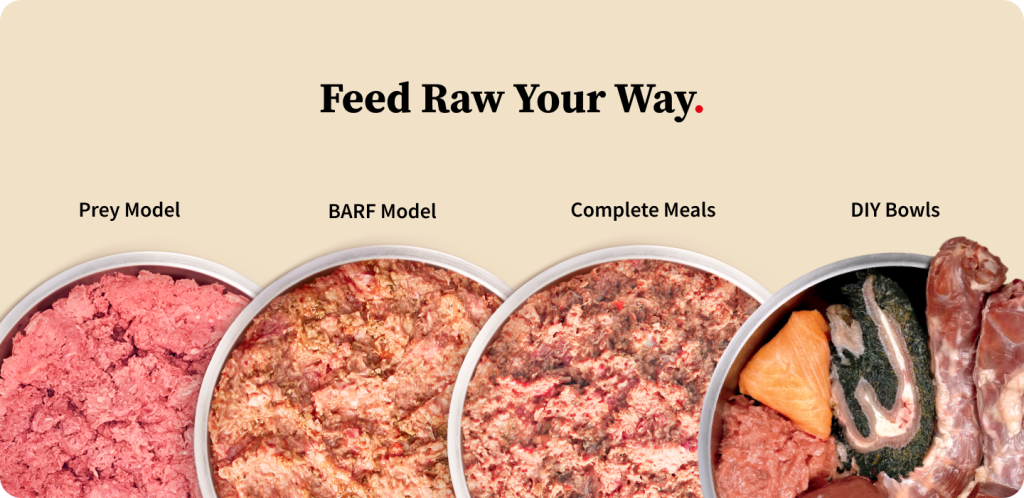What every pet owner should know about 3D & 4D meat.

In this blog we’ll:
- Discover what exactly 3D & 4D meat truly is.
- Discuss why 3D & 4D meat is concerning for pet owners.
- Learn about Carnos’ commitment to high-quality, safe ingredients.
Do you ever find yourself staring at pet food labels, wondering what terms like “meat meal” or “animal by-products” actually mean? As pet owners, scrutinizing every ingredient is part of our commitment to providing our furry family members with the most biologically appropriate and nutrient-dense food possible. But, sometimes, the language of the pet food industry can seem vague, or like crucial details of your dog’s diet are a trade secret, obscured behind strange labels with confusing ingredients.
It doesn’t have to be that way. Carnos has been in the raw pet food industry since 1998 and in that time, we’ve made a name for ourselves as a company that prides itself on being transparent, using only the highest quality ingredients, and making sure our customers and all pet owners have access to the right information to make the best decision for their pet’s wellness. In this blog, we are going to take a look at two critical, but often misunderstood, classifications of meat in the pet food industry: 3D and 4D meat. Understanding these terms is not just about being informed, it is about protecting your dog’s health and making the best decision that you can about what you choose to feed them. Let’s take a look at what every pet parent should know about 3D and 4D meat.
The “Down and Diseased”: Understanding 3D Meat
When we talk about 3D meat, we’re not referring to meat molded into three-dimensional shapes. Rather, we’re referring to meat from animals classified as “Dying, Diseased, or Disabled”. This is a stark contrast to the healthy animals processed for human consumption. Imagine an animal that was too sick to stand, perhaps suffering from an infection, a chronic illness, or debilitating injury. These are often referred to as “downer” animals.
By definition, 3D animals were never healthy enough to enter the human food supply chain. They might have died on a farm before transport, been euthanized due to untreatable conditions, or simply succumbed to illness. No matter what, their health status was compromised before they were processed.The problems associated with 3D meat are significant. For one, the nutritional integrity of an animal that has been ill or dying is severely compromised. These animals often carry bacterial loads or diseases that make them unsafe for consumption. Consider the potential for bacterial contamination like Salmonella or E. Coli which can proliferate rapidly in a deceased or compromised animal. When these animals are processed into “meat and bone meal” or “animal digest” for conventional kibble and canned foods, these underlying issues are simply masked, not removed. For pet owners whose philosophy hinges on providing clean, wholesome, and safe ingredients, the thought of feeding such compromised meat is entirely at odds with our goals.
The “Already Dead”: A Closer Look at 4D Meat
While closely related to 3D meat in terms of unsuitability for human consumption, 4D meat has its own specific classification: “Dead on Arrival.” This refers to animals that were alive when they left the farm, but died during transport to the processing facility.
The biggest concern with 4D meat centers around the time elapsed between death and processing, and the conditions under which the death occurred. Once an animal dies, the process of decomposition begins almost immediately. This creates a breeding ground for bacteria to multiply, especially if the deceased animal is not quickly refrigerated or processed. This rapid bacterial growth – often in warm, unsanitary conditions – significantly increases the risk of pathogenic contamination.
Like 3D meats, 4D meats are legally prohibited from entering the human food supply. However, the less strict regulations in the conventional pet food industry means that these animals can still find their way into rendered products. For pet owners seeking transparency and quality, the idea of feeding an animal that died under such circumstances, with unknown bacterial loads, can be deeply troubling.
Why do 3D and 4D Meats Matter for Raw Feeders?
For raw feeders, ingredient quality isn’t just a preference; it’s a foundational belief. Our entire approach to carnivore nutrition is built upon providing biologically appropriate, nutrient-dense, and safe food that mirrors what our pet’s ancestors would consume. The presence of 3D and 4D meats goes against the raw feeding philosophy on several fronts:
- Compromised Nutritional Value: Feeding raw is all about the vitality of whole, unprocessed foods. An animal that was dead, dying, diseased, or disabled simply does not offer the same level of nutrition as a healthy, thriving animal. The nutrients we seek in raw diets – enzymes, vitamins, minerals, and amino acids – are degraded or absent in compromised meat. Feeding 3D or 4D meat contradicts the goal of providing optimal nutrition.
- Serious Safety Concerns: By choosing to feed raw, we choose to take control of our pet’s diet to ensure they are consuming only the healthiest food possible. So, any raw feeder should be concerned about the safety of pet food ingredients. Introducing meat from a sick or deceased animal means taking the risk of introducing pathogens, toxins, and unknown diseases directly to your pet’s digestive system. Raw feeding should prioritize trusted, clean sources, not subpar and unsafe facilities.
Carnos’ Commitment to Quality and Transparency
At Carnos, we understand that your pet’s health is paramount, and transparency is key. Our commitment to sustainability and traceability has never been clearer: we absolutely never use 3D or 4D meats in any of our raw pet food products. Period.
Our promise to you and your furry friends is simple: we source only the highest quality, USDA-approved ingredients. This means:
- Every cut of meat, every organ, and every bone comes from healthy, inspected animals that were deemed fit for human consumption.
- We partner with trusted, reputable suppliers who adhere to strict quality control standards, ensuring our ingredients are fresh, wholesome, and safe from farm-to-bowl.
- Our sourcing practices reflect our dedication to superior nutrition.
We believe that what you put in your pet’s bowl directly impacts their vitality, longevity, and over-all wellness. By choosing Carnos, you’re choosing peace of mind, knowing that your pet is receiving premium and uncompromised, quality ingredients that truly nourish them.
Learn more about how we make our food and if you need help deciding which truly raw Carnos product is right for you, don’t hesitate to contact us today!
